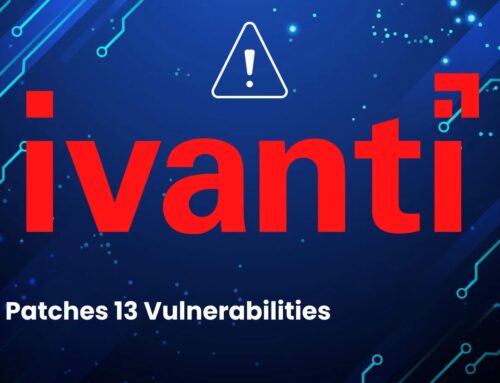
Critical Squid Vulnerability Let Attackers Execute Remote Code
Critical Squid Vulnerability: Understanding CVE-2025-54574 and Its Impact
A significant security flaw has been uncovered in Squid Web Proxy Cache, posing a serious threat to organizations utilizing this widely deployed proxy solution. This critical vulnerability, identified as CVE-2025-54574, permits remote code execution (RCE) and warrants immediate attention from IT security teams.
What is CVE-2025-54574?
CVE-2025-54574 stems from a heap buffer overflow within Squid’s handling of Uniform Resource Names (URNs). A heap buffer overflow occurs when a program attempts to write more data into a fixed-size buffer located in the heap memory than it can hold. This overflow can overwrite adjacent memory locations, leading to corrupted data, program crashes, or, critically, the execution of arbitrary code by an attacker.
The vulnerability’s exploitability through URN handling means an attacker can craft a malicious request containing a malformed URN that, when processed by a vulnerable Squid instance, triggers the buffer overflow. This allows the attacker to inject and execute their own code on the affected system, effectively gaining control.
Impact and Severity
The severity of CVE-2025-54574 is rated as critical, a designation reserved for vulnerabilities with significant potential for system compromise. Remote code execution is among the most dangerous types of vulnerabilities, as it grants attackers extensive control over the compromised system. This can lead to:
- Data Exfiltration: Attackers can steal sensitive information stored on or accessible through the proxy server.
- Further Network Compromise: A compromised Squid proxy can serve as a pivot point for attackers to move laterally within an organization’s network, gaining access to other systems and data.
- System Disruption: Attackers can disrupt the proxy service, leading to denial-of-service for legitimate users. They might also deploy malware, ransomware, or other malicious payloads.
- Reputational Damage: A breach resulting from this vulnerability can severely damage an organization’s reputation and lead to regulatory fines.
All Squid versions prior to 6.4 are susceptible to this vulnerability, highlighting the widespread potential impact across numerous deployments globally.
Understanding Squid Web Proxy Cache
Squid is a popular caching proxy for the web, supporting HTTP, HTTPS, FTP, and other protocols. It reduces bandwidth usage and improves response times by caching frequently requested web content. Acting as an intermediary between users and the internet, Squid proxies are often deployed at network perimeters or within internal networks, making them critical infrastructure components. Given their exposed position, vulnerabilities in Squid can have far-reaching consequences.
Remediation Actions
Immediate action is crucial to mitigate the risks posed by CVE-2025-54574. The primary remediation strategy is to upgrade Squid to a patched version.
- Upgrade to Squid 6.4 or Later: The most effective measure is to upgrade all instances of Squid to version 6.4 or any subsequent release. These versions contain the necessary patches to address the heap buffer overflow vulnerability.
- Regular Patch Management: This incident underscores the importance of a robust patch management strategy for all software, especially critical network infrastructure components. Regularly check for and apply security updates.
- Network Segmentation and Firewalls: Implement network segmentation to limit the blast radius if an attack is successful. Configure firewalls to restrict access to Squid proxy services from untrusted networks.
- Intrusion Detection/Prevention Systems (IDS/IPS): Deploy and properly configure IDS/IPS solutions to monitor for suspicious activity, including attempts to exploit buffer overflow vulnerabilities.
- Security Audits and Scans: Regularly perform security audits and vulnerability scans on your infrastructure to identify and address weaknesses proactively.
Relevant Tools for Detection and Mitigation
Leveraging appropriate tools can significantly aid in identifying vulnerable instances and monitoring for exploitation attempts.
| Tool Name | Purpose | Link |
|---|---|---|
| Nmap (Network Mapper) | Port scanning and service version detection. Can help identify active Squid instances and their versions. | https://nmap.org/ |
| OpenVAS/Greenbone Vulnerability Manager | Comprehensive vulnerability scanning. Can identify outdated Squid versions with known vulnerabilities. | https://www.greenbone.net/ |
| Snort/Suricata | Network intrusion detection/prevention systems (NIDS/NIPS). Can be configured with rules to detect malicious URN requests or C2 traffic. | https://www.snort.org/ https://suricata-ids.org/ |
| Wireshark | Network protocol analyzer. Useful for deep packet inspection to analyze suspicious traffic patterns targeting Squid. | https://www.wireshark.org/ |
| OWASP ZAP (Zed Attack Proxy) | Web application security scanner. While primarily for web apps, can be used to test proxy configurations and potential web-based attack vectors. | https://www.zaproxy.org/ |
Conclusion
The discovery of CVE-2025-54574 in Squid Web Proxy Cache serves as a critical reminder of the ongoing need for vigilance in cybersecurity. Its potential for remote code execution necessitates immediate patching to Squid version 6.4 or higher. Organizations must prioritize their patch management cycles, enhance network defenses, and leverage robust security tools to protect against this and similar threats. Proactive security measures are the most effective defense against sophisticated attacks that target foundational network services.





